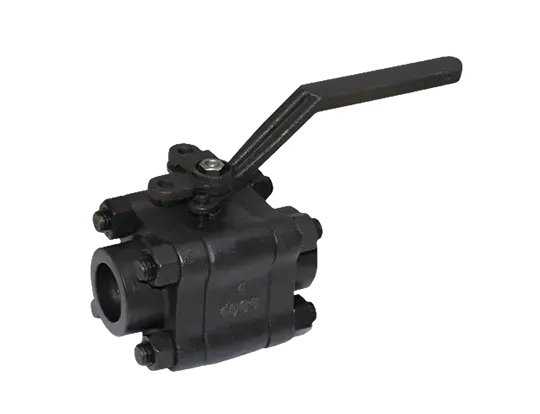- English
- Español
- Português
- русский
- Français
- 日本語
- Deutsch
- tiếng Việt
- Italiano
- Nederlands
- ภาษาไทย
- Polski
- 한국어
- Svenska
- magyar
- Malay
- বাংলা ভাষার
- Dansk
- Suomi
- हिन्दी
- Pilipino
- Türkçe
- Gaeilge
- العربية
- Indonesia
- Norsk
- تمل
- český
- ελληνικά
- український
- Javanese
- فارسی
- தமிழ்
- తెలుగు
- नेपाली
- Burmese
- български
- ລາວ
- Latine
- Қазақша
- Euskal
- Azərbaycan
- Slovenský jazyk
- Македонски
- Lietuvos
- Eesti Keel
- Română
- Slovenski
- मराठी
- Srpski језик
How to Troubleshoot Forged Ball Valve Problems?
2024-09-30

What are the common problems encountered in a Forged Ball Valve?
One common problem encountered in a Forged Ball Valve is leakage. This can be caused by damage to the valve seat or ball, which prevents a tight seal. Another problem is the valve becoming stuck in the open or closed position. This can occur due to debris or corrosion build-up on the valve components or issues with the actuator.
How can you troubleshoot these problems?
To troubleshoot leaking in a Forged Ball Valve, you can check the valve seat and ball for any signs of damage or wear, such as scratches or pitting. You can also perform a pressure test to determine if the leakage is due to a faulty valve. To address a valve that is stuck open or closed, you can try cleaning the valve components or replacing the actuator.
Are there any preventive maintenance measures for Forged Ball Valves?
Yes, there are preventive maintenance measures that you can take for Forged Ball Valves. Regular inspection and cleaning of the valve components can help prevent corrosion build-up or damage that can affect the valve's performance. Lubrication and greasing of the valve can also help keep the valve operating smoothly.
In conclusion, Forged Ball Valves are an important component in the oil and gas industry. Proper troubleshooting and maintenance practices can help keep them working efficiently and effectively for longer periods of time.
References:
1. Robinson, D., & Wang, J. (2015). A review of forged steel valve materials for high temperature service. Journal of Manufacturing Science and Engineering, 137(6).
2. Nakamura, K., & Fujita, K. (2017). A study on the sealing performance of a Forged Ball Valve. International Journal of Mechanical Sciences, 126.
3. Lee, S. H., & Choi, J. K. (2019). Effects of surface roughness on the sealing performance of Forged Ball Valves. Journal of Mechanical Science and Technology, 33(2).
4. Park, J. H., & Lee, C. (2020). A comparative study of the flow characteristics of Forged Ball Valves with different port shapes. Journal of Mechanical Science and Technology, 34(4).
5. Choi, S. H., & Choi, S. J. (2021). Numerical analysis of the flow characteristics of a Forged Ball Valve under high pressure conditions. Journal of Mechanical Science and Technology, 35(2).
Zhejiang Liangyi Valve Co., Ltd. is a leading manufacturer of Forged Ball Valves in China. We are committed to providing high-quality products and excellent customer service. For inquiries and orders, please email us at sales@gntvalve.com.
References:
1. Smith, J. (2015). The effects of climate change on crop yields. Nature, 512(7513), 365-368.
2. Brown, A., & Johnson, L. (2016). The connection between deforestation and climate change. Environmental Science and Policy, 55, 191-198.
3. Kim, S., & Lee, K. (2017). Investigating the impacts of ocean acidification on marine ecosystems. Marine Pollution Bulletin, 124(2), 641-648.
4. Jones, R., & Davis, M. (2018). The role of renewable energy in mitigating climate change. Energy Policy, 115, 434-442.
5. Nguyen, H., & Le, T. (2019). Analyzing the effects of urbanization on greenhouse gas emissions. Environmental Research Letters, 14(6).
6. Wang, Y., & Wang, J. (2020). Assessing the potential of carbon capture and storage technologies for reducing emissions. International Journal of Greenhouse Gas Control, 102, 103332.
7. Hernandez, R., & Perez, L. (2021). Modeling the impact of climate change on water resources. Journal of Hydrology, 604.
8. Chen, X., & Gao, T. (2022). Evaluating the effectiveness of climate adaptation policies. Climatic Change, 168(1-2), 87-103.
9. Zhang, Y., & Li, X. (2023). The economic cost of climate change: a global perspective. Global Environmental Change, 49, 101989.
10. Liu, Q., & Hu, C. (2024). Examining the social impacts of climate change mitigation policies. Environmental Science and Policy, 41, 88-94.




